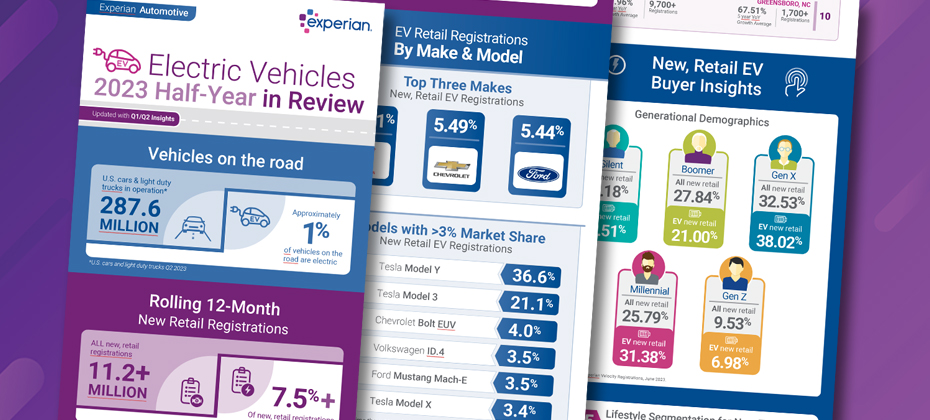Industries

For companies that regularly engage in financial transactions, having a customer identification program (CIP) is mandatory to comply with the regulations around identity verification requirements across the customer lifecycle. In this blog post, we will delve into the essentials of a customer identification program, what it entails, and why it is important for businesses to implement one. What is a customer identification program? A CIP is a set of procedures implemented by financial institutions to verify the identity of their customers. The purpose of a CIP is to be a part of a financial institution’s fraud management solutions, with similar goals as to detect and prevent fraud like money laundering, identity theft, and other fraudulent activities. The program enables financial institutions to assess the risk level associated with a particular customer and determine whether their business dealings are legitimate. An effective CIP program should check the following boxes: Confidently verify customer identities Seamless authentication Understand and anticipate customer activities Where does Know Your Customer (KYC) fit in? KYC policies must include a robust CIP across the customer lifecycle from initial onboarding through portfolio management. KYC solutions encompass the financial institution’s customer identification program, customer due diligence and ongoing monitoring. What are the requirements for a CIP? Customer identification program requirements vary depending on the type of financial institution, the type of account opened, and other factors. However, the essential components of a CIP include verifying the customer's identity using government-issued identification, obtaining and verifying the customer's address, and checking the customer against a list of known criminals, terrorists, or suspicious individuals. These measures help detect and prevent financial crimes. Why is a CIP important for businesses? CIP helps businesses mitigate risk by ensuring they have accurate and up-to-date information about their customers. This also helps financial institutions comply with laws and regulations that require them to monitor financial transactions for any suspicious activities. By having a robust CIP in place, businesses can establish trust and rapport with their customers. According to Experian’s 2024 U.S. Identity and Fraud Report, 63% of consumers say it's extremely or very important for businesses to recognize them online. Having an effective CIP in place is part of financial institutions showing their consumers that they have their best interests top of mind. Finding the right partner It’s important to find a partner you trust when working to establish processes and procedures for verifying customer identity, address, and other relevant information. Companies can also utilize specialized software that can help streamline the CIP process and ensure that it is being carried out accurately and consistently. Experian’s proprietary and partner data sources and flexible monitoring and segmentation tools allow you to resolve CIP discrepancies and fraud risk in a single step, all while keeping pace with emerging fraud threats with effective customer identification software. Putting consumers first is paramount. The security of their identity is priority one, but financial institutions must pay equal attention to their consumers’ preferences and experiences. It is not just enough to verify customer identities. Leading financial institutions will automate customer identification to reduce manual intervention and verify with a reasonable belief that the identity is valid and eligible to use the services you provide. Seamless experiences with the right amount of friction (I.e., multi-factor authentication) should also be pursued to preserve the quality of the customer experience. Putting it all together As cybersecurity threats are becoming more sophisticated, it is essential for financial institutions to protect their customerinformation and level up their fraud prevention solutions. Implementing a customer identification program is an essential component in achieving that objective. A robust CIP helps organizations detect, prevent, and deter fraudulent activities while ensuring compliance with regulatory requirements. While implementing a CIP can be complex, having a solid plan and establishing clear guidelines is the best way for companies to safeguard customer information and maintain their reputation. CIPs are an integral part of financial institutions security infrastructures and must be a business priority. By ensuring that they have accurate and up-to-date data on their customers, they can mitigate risk, establish trust, and comply with regulatory requirements. A sound CIP program can help financial institutions detect and prevent financial crimes and cyber threats while ensuring that legitimate business transactions are not disrupted, therefore safeguarding their customers' information and protecting their own reputation. Learn more

As the sophistication of fraudulent schemes increases, so must the sophistication of your fraud detection analytics. This is especially important in an uncertain economic environment that breeds opportunities for fraud. It's no longer enough to rely on old techniques that worked in the past. Instead, you need to be plugged into machine learning, artificial intelligence (AI) and real-time monitoring to stay ahead of criminal attempts. Your customers have come to expect cutting-edge security, and fraud analytics is the best way to meet — and surpass — those expectations. Leveraging these analytics can help your business better understand fraud techniques, uncover hidden insights and make more strategic decisions. What is fraud analytics? Fraud analytics refers to the idea of preventing fraud through sophisticated data analysis that utilizes tools like machine learning, data mining and predictive AI.1 These services can analyze patterns and monitor for anomalies that signal fraud attempts.2 While at first glance this may sound like a lot of work, it's necessary in today's technologically savvy culture. Fraud attempts are becoming more sophisticated, and your fraud detection services must do the same to keep up. Why is fraud analytics so important? According to the Experian® 2023 US Identity and Fraud Report, fraud is a growing issue that businesses cannot ignore, especially in an environment where economic uncertainty provides a breeding ground for fraudsters. Last year alone, consumers lost $8.8 billion — an increase of 30 percent over the previous year. Understandably, nearly two-thirds of consumers are at least somewhat concerned about online security. Their worries range from authorized push payment scams (such as phishing emails) to online privacy, identity theft and stolen credit cards. Unfortunately, while 75 percent of surveyed businesses feel confident in protecting against fraud, only 45 percent understand how fraud impacts their business. There's a lot of unearned confidence out there that can leave businesses vulnerable to attack, especially with nearly 70 percent of businesses admitting an increase in fraud loss in recent years. The types of fraud that businesses most frequently encounter include: Authorized push payment fraud: Phishing emails and other schemes that persuade consumers to deposit funds into fraudulent accounts. Transactional payment fraud: When fraudulent actors steal credit card or bank account information, for example, to make unauthorized payments. Account takeover: When a fraudster gains access to an account that doesn't belong to them and changes login details to make unauthorized transactions. First-party fraud: When an account holder uses their own account to commit fraud, like misrepresenting their income to get a lower loan rate. Identity theft: Any time a person's private information is used to steal their identity. Synthetic identity theft: When someone combines real and fake personal data to create an identity that's used to commit fraud. How can fraud analytics be used to help your business? More than 85% of consumers expect businesses to respond to their security and fraud concerns. A good portion of them (67 percent) are even ready to share their personal data with trusted sources to help make that happen. This means that investing in risk and fraud analytics is not only vital for keeping your business and customer data secure, but it will score points with your consumers as well. So how can your business utilize fraud analytics? Machine learning is a great place to start. Rather than relying on outdated rules-based analytic models, machine learning can vastly increase your speed in identifying fraud attempts. This means that when a new fraudulent trend emerges, your machine learning software can pinpoint it fast and flag your security team. Machine learning also lets you automatically analyze large data sets across your entire customer portfolio, improving customer experiences and your response time. In general, the best way for your business to use fraud analytics is by utilizing a multi-layered approach, such as the robust fraud management solutions offered by Experian. Instead of a one-size-fits-all solution, Experian lets you customize a framework of physical and digital data security that matches your business needs. This framework includes a cloud-based platform, machine learning for streamlined data analytics, biometrics and other robust identity-authentication tools, real-time alerts and end-to-end integration. How Experian can help Experian's platform of fraud prevention solutions and advanced data analytics allows you to be at the forefront of fraud detection. The platform includes options such as: Account takeover prevention. Account takeovers can go unnoticed without strong fraud detection. Experian's account takeover prevention tools automatically flag and monitor unusual activities, increase efficiency and can be quickly modified to adapt to the latest technologies. Bust-out fraud prevention. Experian utilizes proactive monitoring and early detection via machine learning to prevent bust-out fraud. Access to premium credit data helps enhance detection. Commercial entity fraud prevention. Experian's Sentinel fraud solutions blend consumer and business datasets to create predictive insights on business legitimacy and credit abuse likelihood. First-party fraud prevention. Experian's first-party fraud prevention tools review millions of transactions to detect patterns, using machine learning to monitor credit data and observations. Global data breach protection. Experian also offers data breach protection services, helping you use turnkey solutions to build a program of customer notifications and identity protection. Identity protection. Experian offers identity protection tools that deliver a consistent brand experience across touchpoints and devices. Risk-based authentication. Minimize risk with Experian's adaptive risk-based authentication tools. These tools use front- and back-end authentication to optimize cost, risk management and customer experience. Synthetic identity fraud protection. Synthetic identity fraud protection guards against the fastest-growing financial crimes. Automated detection rules evaluate behavior and isolate traits to reduce false positives. Third-party fraud prevention. Experian utilizes third-party prevention analytics to identify potential identity theft and keep your customers secure. Your business's fraud analytics system needs to increase in sophistication faster than fraudsters are fine-tuning their own approaches. Experian's robust analytics solutions utilize extensive consumer and commercial data that can be customized to your business's unique security needs. Experian can help secure your business from fraud Experian is committed to helping you optimize your fraud analytics. Find out today how our fraud management solutions can help you. Learn more 1 Pressley, J.P. "Why Banks Are Using Advanced Analytics for Faster Fraud Detection," BizTech, July 25, 2023. https://biztechmagazine.com/article/2023/07/why-banks-are-using-advanced-analytics-faster-fraud-detection 2 Coe, Martin and Melton, Olivia. "Fraud Basics," Fraud Magazine, March/April 2022. https://www.fraud-magazine.com/article.aspx?id=4295017143

Experian Automotive has updated our Electric Vehicles 2022 Year-in-Review Infographic Report with new 2023 Half-Year insights. In the previous report, we shared that over 6% of new, retail registrations were for electric vehicles. As we evaluated the current state of the Electric Vehicle Market for the first half of 2023 (January-June registrations), the percentage of new, retail registrations for electric vehicles has increased to over 7.5%. There are several factors driving consumer adoption of electric vehicles in the United States, including: Environmental concerns: Consumers are increasingly concerned about the environmental impact of transportation, and EVs produce zero emissions at the tailpipe. Government incentives: Many state and federal governments offer incentives for the purchase of electric vehicles, such as tax credits and rebates. Falling battery costs: The cost of lithium-ion batteries, the key component of EVs, has fallen in recent years, making EVs more affordable for consumers. Increasing availability of EV models: Automakers are releasing a growing number of EV models, giving consumers more choices to fit their needs and budgets. Despite the progress that has been made, there are still some challenges that need to be addressed to accelerate EV adoption in the United States. These challenges include: Lack of charging infrastructure: There is a need for more public charging stations, especially in rural areas and along major highways. High upfront cost: EVs can still be more expensive to purchase than gasoline-powered vehicles, even after factoring in government incentives. Range anxiety: Some consumers are concerned about the range of EVs, which can be limited compared to gasoline-powered vehicles. Despite the challenges, the future of electric vehicles in the United States is bright. Automakers are investing heavily in EV development, and the number of EV models available to consumers is expected to continue to grow. Additionally, state and federal governments are taking steps to support EV adoption, such as investing in charging infrastructure and offering incentives for consumers and businesses to purchase If you’d like to learn more about the current state of the Electric Vehicle market and buyer and how that market is growing and changing, check out our Updated Electric Vehicles Year in Review Infographic.

In a series of articles, we talk about different types of fraud and how to best solve for them. This article will explore first-party fraud and how it's similar to biting into a cookie you think is chocolate chip, only to find that it’s filled with raisins. The raisins in the cookie were hiding in plain sight, indistinguishable from chocolate chips without a closer look, much like first-party fraudsters. What is first-party fraud? First-party fraud refers to instances when an individual purposely misrepresents their identity in exchange for goods or services. In the financial services industry, it's often miscategorized as credit loss and written off as bad debt, which causes problems when organizations later try to determine how much they’ve lost to fraud versus credit risk. Common types of first-party fraud include: Chargeback fraud: Also known as "friendly fraud," chargeback fraud occurs when an individual knowingly makes a purchase with their credit card and then requests a chargeback from the issuer, claiming they didn't authorize the purchase. Application fraud: This takes place when an individual uses stolen or manipulated information to apply for a loan, credit card or job. In 2023, the employment sector accounted for 45% of all false document submissions — 70% of those who falsified their resumes still got hired. Fronting: Done to get cheaper rates, this form of insurance fraud happens when a young or inexperienced individual is deliberately listed as a named driver, when they're actually the main driver of the vehicle. Goods lost in transit fraud (GLIT): This occurs when an individual claims the goods they purchased online did not arrive. To put it simply, the individual is getting a refund for something they actually already received. A first-party fraudster can also recruit “money mules” — individuals who are persuaded to use their own information to obtain credit or merchandise on behalf of a larger fraud ring. This type of fraud has become especially prevalent as more consumers are active online. Money mules constitute up to 0.3% of accounts at U.S. financial institutions, or an estimated $3 billion in fraudulent transfers. How does it impact my organization? Firstly, there are often substantial losses associated with first-party fraud. An imperfect first-party fraud solution can also strain relationships with good customers and hinder growth. When lenders have to interpret actions and behavior to assess customers, there’s a lot of room for error and losses. Those same losses hinder growth when, as mentioned before, businesses anticipate credit losses that aren’t actually credit losses. This type of fraud isn’t a single-time event, and it doesn’t occur at just one point in the customer lifecycle. It occurs when good customers develop fraudulent intent, when new applicants who have positive history with other lenders have recently changed circumstances or when seemingly good applicants have manipulated their identities to mask previous defaults. Finally, first-party fraud impacts how your organization categorizes and manages risk – and that’s something that touches every department. Solving the first-party fraud problem First-party fraud detection requires a change in how we think about the fraud problem. It starts with the ability to separate first- and third-party fraud to treat them differently. Because first-party fraud doesn’t have a victim, you can’t work with the person whose information was stolen to confirm the fraud. Instead, you’ll have to implement a consistent monitoring system and make a determination internally when fraud is suspected. As we’ve already discussed, the fraud problem is complex. However with a partner like Experian, you can leverage the fraud risk management strategies required to perform a closer examination and the ability to differentiate between the types of fraud so you can determine the best course of action moving forward. Additionally, our robust fraud management solutions can be used for synthetic identity fraud and account takeover fraud prevention, which can help you minimize customer friction to improve and deepen your relationships while preventing fraud. Contact us if you’d like to learn more about how Experian is using our identity expertise, data and analytics to improve identity resolution and detect and prevent all types of fraud. Contact us

In today’s fast-paced world, the telecommunications industry is not just about connecting calls or sending messages. It’s about creating seamless digital experiences, especially when onboarding new customers. However, with the rise of digital services, the industry faces an increasing challenge: the need to mitigate fraud while streamlining the onboarding process. The digital onboarding revolution Digital onboarding has transformed the way customers join telecommunications services. No longer are people required to visit a physical store or wait for lengthy paperwork. Instead, they can sign up for mobile, internet or TV services from the comfort of their homes, often within minutes. The convenience, however, has opened new doors for fraudsters. As the onboarding process happens online, the risk of identity theft, synthetic identity fraud and other fraudulent activities has surged. So, how can telecom companies provide fritctionless experiences while keeping fraud at bay? Mitigating fraud in telecommunications onboarding Know your customer (KYC) verification: Implement robust KYC solutions to verify the identity of new customers. This may include identity document checks, facial recognition or biometric authentication. Device and location data; and velocity: Analyze the device and location data of applicants. Does the device match the customer’s claimed location? Unusual patterns could signal potential fraud. Behavioral analysis: Monitor user behavior during the onboarding process. Frequent changes in information or suspicious browsing activity may indicate fraudulent intent. Machine learning (ML) and artificial intelligence (AI): Leverage AI/ML algorithms to detect patterns and anomalies humans might miss. These technologies can adapt and evolve to stay ahead of fraudsters. Document verification: Use document verification services to ensure that documents provided by customers are genuine. This can include checks for altered or forged documents. Industry data sharing–consortia: Collaborate with industry databases and share fraud-related information to help identify applicants with a history of fraudulent activity or reveal patterns. The balancing act While it’s crucial to mitigate fraud, telecommunication companies must strike a balance between security and a seamless onboarding experience. Customers demand a hassle-free process, and overly stringent security measures can deter potential subscribers. By combining advanced technology, behavioral analysis and proactive fraud prevention strategies, telecom companies can create a secure digital onboarding journey that minimizes risk without compromising user experience. In doing so, they empower customers to embrace the convenience of digital services while staying one step ahead of fraudsters in today’s interconnected world. Learn more about Experian and the telecom industry Learn more about our fraud and identity solutions

Authorized Push Payment fraud, also known as APP fraud or APP scams, involves a fraudster persuading a victim to willingly deposit funds to their account or to the account of a complicit third party, also known as a money mule. This type of fraud often includes social engineering of the victim using fake investment schemes, impersonation scams, purchase scams or other schemes. Social engineering clouds victims' judgments and encourages them to make payments willingly to one or more money mules, with funds eventually reaching fraudsters' accounts. This type of fraud has become more attractive to criminals since the advent of real-time payment systems, which are now a reality worldwide. Fraud fueled by real-time payments Authorized push payment fraud is becoming more prevalent, and it is imperative that you know how to detect and prevent it to safeguard your organization. Real-time payment systems, such as Faster Payments in the United Kingdom (UK), PIX in Brazil, the New Payments Platform in Australia, and FedNow in the USA, make real-time payment fraud a reality. APP fraud is notoriously difficult for banks to prevent because the victim is sending the money themselves, and steps that banks take to authenticate customers are ineffective, as the customer will pass identity checks. The victims cannot reverse a payment once they realize they have been conned, as payments made using real-time payment schemes are irrevocable. APP fraud is particularly prevalent in countries where banks have an infrastructure that facilitates fast or immediate transfers, like the UK. Learn more about the new UK legislation around APP fraud Reimbursment is vital to victims Some common types of authorized push payment fraud include attacks on individuals like romance scams, family emergency swindles, targeting property transactions, and intercepting supplier payments. To protect against APP fraud, it is important to employ layered fraud protection across all products and channels used to manage real-time payments. But that alone is not enough. Reimbursement is vital in reversing the financial distress caused by APP scams, but it cannot reverse the emotional distress these scams cause. Prevention, detection, and awareness measures must be moved up on the agenda for banks, non-traditional lenders, PSPs (Payment Service Providers), and customers alike to ensure that the customer is protected at every stage of the payment journey. Effective alerts are a key focus area for preventing customers from falling victim to APP scams. An effective warning is one that is dynamic and tailored to the customer’s payment journey. Recent research indicates that minor changes to notifications across banking apps can have the potential to drastically reduce the number of individuals that fall victim to APP fraud. The biggest effects were achieved when a combination of risk-based and Call to Action (CTA) warnings were implemented over a period of time. A collective effort across the banking industry and beyond is crucial to protect customers and tackle the fight against APP fraud. Banks, non-traditional lenders, and PSPs can raise awareness to educate their customers on the signs and risks of APP scams, and work with industry oversight bodies to commit to voluntary standards and codes to ensure good customer outcomes. Online forums, social media platforms, and influential voices also have a role to play in raising awareness of and preventing scams. Customers can also help by being vigilant and reading and acting upon warnings and information presented to them. Authorized push payment fraud prevention To effectively combat authorized push payment fraud, financial institutions must implement a range of measures, including: Direct communication with consumers. Enhanced transaction monitoring. Effective risk mitigation and management. Improved employee education. Public awareness campaigns. In response to this growing threat, banks have introduced various checks and balances, such as the Confirmation of Payee (CoP) service in the UK, which cross-references bank details with the account holder's name when processing online payments. Banks are also leveraging sophisticated fraud prevention software stacks, incorporating machine learning and contextual data to identify and flag suspicious transactions. By utilizing AI technologies, financial institutions can process data points faster and enhance their fraud detection capabilities, mitigating identity risk and safeguarding customer accounts. Clear communication with customers is essential in the fight against APP fraud. Higher-risk companies now include warnings in their communications, advising customers not to act on messages that request payment into new bank accounts. Financial institutions can also offer cool-off periods before payments are sent, increase due diligence around payment destinations, and monitor accounts that regularly receive high-value payments. Additionally, financial institutions can play a crucial role in educating their customers and promoting awareness around this increasingly common type of fraud. By combining these approaches with robust fraud prevention software, the public can fight against this type of fraudulent attack. Taking the next steps with the right partner At Experian, we offer rich data sources, advanced analytics capabilities, and the consultancy services needed to rapidly adopt data analytics solutions that mitigate fraud risks. Our solutions are used by PSPs of all types and sizes – including some of the largest banks – to identify potentially fraudulent customers and transactions, and to ensure that action is taken in real time to prevent fraudulent payments being made. Learn more about our fraud management solutions *This article leverages/includes content created by an AI language model and is intended to provide general information.

Model governance is growing increasingly important as more companies implement machine learning model deployment and AI analytics solutions into their decision-making processes. Models are used by institutions to influence business decisions and identify risks based on data analysis and forecasting. While models do increase business efficiency, they also bring their own set of unique risks. Robust model governance can help mitigate these concerns, while still maintaining efficiency and a competitive edge. What is model governance? Model governance refers to the framework your organization has in place for overseeing how you manage your development, model deployment, validation and usage.1 This can involve policies like who has access to your models, how they are tested, how new versions are rolled out or how they are monitored for accuracy and bias.2 Because models analyze data and hypotheses to make predictions, there's inherent uncertainty in their forecasts.3 This uncertainty can sometimes make them vulnerable to errors, which makes robust governance so important. Machine learning model governance in banks, for example, might include internal controls, audits, a thorough inventory of models, proper documentation, oversight and ensuring transparent policies and procedures. One significant part of model governance is ensuring your business complies with federal regulations. The Federal Reserve Board and the Office of the Comptroller of the Currency (OCC) have published guidance protocols for how models are developed, implemented and used. Financial institutions that utilize models must ensure their internal policies are consistent with these regulations. The OCC requirements for financial institutions include: Model validations at least once a year Critical review by an independent party Proper model documentation Risk assessment of models' conceptual soundness, intended performance and comparisons to actual outcomes Vigorous validation procedures that mitigate risk Why is model governance important — especially now? More and more organizations are implementing AI, machine learning and analytics into their models. This means that in order to keep up with the competition's efficiency and accuracy, your business may need complex models as well. But as these models become more sophisticated, so does the need for robust governance.3 Undetected model errors can lead to financial loss, reputation damage and a host of other serious issues. These errors can be introduced at any point from design to implementation or even after deployment via inappropriate usage of the model, drift or other issues. With model governance, your organization can understand the intricacies of all the variables that can affect your models' results, controlling production closely with even greater efficiency and accuracy. Some common issues that model governance monitors for include:2 Testing for drift to ensure that accuracy is maintained over time. Ensuring models maintain accuracy if deployed in new locations or new demographics. Providing systems to continuously audit models for speed and accuracy. Identifying biases that may unintentionally creep into the model as it analyzes and learns from data. Ensuring transparency that meets federal regulations, rather than operating within a black box. Good model governance includes documentation that explains data sources and how decisions are reached. Model governance use cases Below are just three examples of use cases for model governance that can aid in advanced analytics solutions. Credit scoring A credit risk score can be used to help banks determine the risks of loans (and whether certain loans are approved at all). Governance can catch biases early, such as unintentionally only accepting lower credit scores from certain demographics. Audits can also catch biases for the bank that might result in a qualified applicant not getting a loan they should. Interest rate risk Governance can catch if a model is making interest rate errors, such as determining that a high-risk account is actually low-risk or vice versa. Sometimes changing market conditions, like a pandemic or recession, can unintentionally introduce errors into interest rate data analysis that governance will catch. Security challenges One department in a company might be utilizing a model specifically for their demographic to increase revenue, but if another department used the same model, they might be violating regulatory compliance.4 Governance can monitor model security and usage, ensuring compliance is maintained. Why Experian? Experian® provides risk mitigation tools and objective and comprehensive model risk management expertise that can help your company implement custom models, achieve robust governance and comply with any relevant federal regulations. In addition, Experian can provide customized modeling services that provide unique analytical insights to ensure your models are tailored to your specific needs. Experian's model risk governance services utilize business consultants with tenured experience who can provide expert independent, third-party reviews of your model risk management practices. Key services include: Back-testing and benchmarking: Experian validates performance and accuracy, including utilizing statistical metrics that compare your model's performance to previous years and industry benchmarks. Sensitivity analysis: While all models have some degree of uncertainty, Experian helps ensure your models still fall within the expected ranges of stability. Stress testing: Experian's experts will perform a series of characteristic-level stress tests to determine sensitivity to small changes and extreme changes. Gap analysis and action plan: Experts will provide a comprehensive gap analysis report with best-practice recommendations, including identifying discrepancies with regulatory requirements. Traditionally, model governance can be time-consuming and challenging, with numerous internal hurdles to overcome. Utilizing Experian's business intelligence and analytics solutions, alongside its model risk management expertise, allows clients to seamlessly pass requirements and experience accelerated implementation and deployment. Experian can optimize your model governance Experian is committed to helping you optimize your model governance and risk management. Learn more here. References 1Model Governance," Open Risk Manual, accessed September 29, 2023. https://www.openriskmanual.org/wiki/Model_Governance2Lorica, Ben, Doddi, Harish, and Talby, David. "What Are Model Governance and Model Operations?" O'Reilly, June 19, 2019. https://www.oreilly.com/radar/what-are-model-governance-and-model-operations/3"Comptroller's Handbook: Model Risk Management," Office of the Comptroller of the Currency. August 2021. https://www.occ.treas.gov/publications-and-resources/publications/comptrollers-handbook/files/model-risk-management/pub-ch-model-risk.pdf4Doddi, Harish. "What is AI Model Governance?" Forbes. August 2, 2021. https://www.forbes.com/sites/forbestechcouncil/2021/08/02/what-is-ai-model-governance/?sh=5f85335f15cd

Have you heard about the mischievous ghosts haunting our educational institutions? No, I am not talking about Casper's misfit pals. These are the infamous ghost students! They are not here for a spooky study session, oh no! They are cunning fraudsters lurking in the shadows, pretending to be students who never attend classes. It is taking ghosting to a whole new level. Understanding ghost student fraud Ghost student fraud is a serious and alarming issue in the educational sector. The rise of online classes due to the pandemic has made it easier for fraudsters to exploit application systems and steal government aid meant for genuine students. Community colleges have become primary targets due to slower adoption of cybersecurity defenses. It is concerning to hear that a considerable number of applications, such as in California (where Social Security numbers are not required at enrollment), are fictitious, with potential losses in financial aid meant for students in need. The use of stolen or synthetic identities in creating bot-powered applications further exacerbates the problem. The consequences of enrollment fraud can have a profound impact on institutions and students. The recent indictment of individuals involved in enrollment fraud, where identities were stolen to receive federal student loans, highlights the severity of the issue. Unfortunately, the lack of awareness and inadequate identity document verification processes in many institutions make it difficult to fully grasp the extent of the problem. What is a ghost student? Scammers use different methods to commit ghost student loan fraud, including creating fake schools or enrolling in real colleges. Some fraudsters use deceitful tactics to obtain the real identities of students, and then they use it to fabricate loan applications. Types of ghost loan fraud, include: Fake loan offers: Fraudsters contact students via various channels, claiming to offer exclusive student loan opportunities with attractive terms and low interest rates. They often request personal and financial information including their SSN and bank account information and use it to create ghost loans. Identity theft: Threat actors will steal personal info through data breaches or phishing. They will then forge loan applications using the victim’s identity. Targeting vulnerable individuals: Ghost student loan fraud tends to prey on those already burdened by debt. Scammers may target borrowers with poor credit history, promising loan forgiveness or debt consolidation plans in exchange for a fee. Once the victim pays, the fraudsters disappear. Ultimately, addressing ghost student fraud requires a multi-faceted approach involving collaboration between educational institutions, government agencies, and law enforcement to safeguard the accessibility and integrity of education for all deserving students. Safeguarding the financial integrity of educational institutions One powerful weapon in the battle against ghost student fraudsters is the implementation of robust identity verification solutions. Financial institutions, online marketplaces, and government entities have long employed such tools to verify the authenticity of individuals, and their application in the educational domain can be highly effective. By leveraging these tools, institutions can swiftly and securely carry out synthetic fraud detection and confirm the identity of applicants by cross-referencing multiple credible sources of information. For instance, government-issued IDs can be verified against real-time selfies, email addresses can be screened against reliable databases, and personally identifiable information (PII) can be compared to third-party dark web data to detect compromised identities. Clinching evidence from various sources renders it nearly impossible for fraudsters to slip past the watchful eyes of enrollment officers. Moreover, implementation of identity verification measures can be facilitated through low-code implementation, ensuring seamless integration into existing enrollment workflows without requiring extensive technical expertise or incurring exorbitant development costs. To further fortify security measures, educational institutions may consider incorporating biometric enrollment and authentication solutions. By requiring face or voice biometrics for accessing school resources, institutions can create an additional layer of protection against fraudsters and their ethereal counterparts. The reluctance of fraudsters to enroll their own biometric data serves as a powerful deterrent against their intrusive activities. Taking action By adopting these robust measures, higher educational institutions can fortify their defenses against ghost student fraud and maintain the integrity of their finances. The use of online identity verification methods and biometric authentication systems not only strengthens the enrollment process but serves as a stringent reminder that there is no resting place for fraudsters within the hallowed halls of education. To learn more about how Experian can help you leverage fraud prevention solutions, visit us online or request a call. *The SSN Verification tool, better known as eCBSV is also a tool that can be utilized to verify SSN. *This article leverages/includes content created by an AI language model and is intended to provide general information.

Debt collectors need to find, contact and work with people to collect on unpaid accounts. That can be challenging enough. But when synthetic identity fraud accounts are mixed into your collection portfolio, you'll waste resources trying to collect from people who don't even exist. What is synthetic identity fraud? Synthetic identity fraud happens when fraudsters mix real and fake identity information — such as a stolen Social Security number (SSN) with a fake name and date of birth — to create an identity. Fraudsters occasionally try to quickly create and use synthetic IDs to commit fraud. But these are often more complex operations, and the fraudsters spend months or years building synthetic IDs. They might then use or sell an identity once it has a thick credit file, matching identification documents and a robust social media presence. The resulting fraud can have a significant impact on lenders. By some estimates, annual synthetic fraud losses for consumer loans and credit cards could be as high as $11 billion.1 Total annual losses are likely even higher because organizations may misclassify synthetic fraud losses — or not classify them at all — and fraudsters also target other types of organizations, such as business lenders and medical care providers Recognizing synthetic identities and fraud losses Organizations can ideally detect and stop synthetic IDs at account opening. If a fraudster slips past the first line of defense, fraud detection tools that aren't tailored for synthetic identity fraud might not flag the account as suspicious. This is especially true when fraudsters make several on-time payments, mirroring a legitimate account holder's behavior, before stopping payments or busting out. Sometimes, these past-due accounts get sent to collections before being written off as a credit loss. That creates new issues. Debt management and collections systems can help collections departments prioritize outreach and minimize charge-offs. But if you add fraudulent accounts to the mix, you wind up throwing away your time and resources. Even when you properly classify these written-off accounts as fraud losses, it can be hard to distinguish between first-party fraud by a legitimate consumer and synthetic identity fraud losses. However, the distinction can be important for optimizing your credit risk strategy. Detection is the key to prevention Keeping synthetic fraud out of collection portfolios requires a multi-layered approach to fraud management. You need systems to help stop synthetic fraud at the front door and ongoing account monitoring throughout the customer lifecycle. You also want fraud solutions that use data from multiple sources to recognize synthetic identities, such as credit bureau, public records, consortium and behavioral data. Experian's industry-leading fraud and identity solutions Experian's synthetic identity fraud and identity resolution solutions make it a leader in the space. These include: Sure Profile™uses credit, public record and identity-specific data to create a composite history of a consumer's identity and generate a risk score. You can automate risk-based decisions based on the score, and you'll have access to the underlying Sure Profile attributes. CrossCore® is a cloud-based identity and fraud management platform that you can connect to Experian, third-party and internal tools to get a 360-degree view of your accounts throughout the customer lifecycle. Experian partners with the Social Security Administration to offer an electronic Consent Based Social Security Number Verification (eCBSV) service, which can help you determine if an SSN, name and date of birth match. It can be an important part of a step-up verification when risk signals indicate that an identity might not be legitimate. View our tip sheet to learn more about keeping fraudulent accounts out of your collection portfolio. Download now 1Experian (2022). Preventing synthetic identity fraud

The 2023 hurricane season is upon us. This year, over 21 named storms were predicted for this year, and we have already seen storms make landfall. One of the biggest dangers that hurricanes pose to the automobile industry is vehicle water and/or flood damage. In 2022, FEMA paid out over $1 billion for flood damage to automobiles in the United States. This damage can have a significant impact on businesses in the automobile industry, including: New car dealerships: Flood damage can destroy new cars and trucks, forcing dealerships to replace them. This can be a costly proposition, especially in a time when supply chains are already disrupted. Used car dealerships: Flood damage can also damage used cars, making them less valuable or even unsalable. This can lead to lost revenue for used car dealerships. Auto repair shops: Auto repair shops may be called upon to repair flood-damaged vehicles. However, some flood-damaged vehicles may be beyond repair. This can lead to lost revenue for auto repair shops. Auto parts suppliers: Auto parts suppliers may also be impacted by flood damage. If factories that produce auto parts are flooded, it can disrupt the supply of auto parts to dealerships and repair shops. In addition, it is important to note that flooded cars may still be on the road. And these vehicles may not be in operation in the geography where the reported water and/or flood damage occurred. To help you stay up to date on the latest insights into flood damaged vehicles we’ve put together a complimentary Vehicle Insights: Water and Flood Reported Events Infographic. You’ll learn: • What percentage of owners repurchase a different vehicle after water or flood damage for their current vehicle • Where was the damage originally reported? • Where are vehicles with water or flood damage currently located? Download the Vehicle Insights: Water and Flood Reported Events Infographic Now! Here is another resource you may find useful to help mitigate the risk of purchasing flood damaged vehicles. Check out our Free AutoCheck Flood Risk Check.

Data-driven machine learning model development is a critical strategy for financial institutions to stay ahead of their competition, and according to IDC, remains a strategic priority for technology buyers. Improved operational efficiency, increased innovation, enhanced customer experiences and employee productivity are among the primary business objectives for organizations that choose to invest in artificial intelligence (AI) and machine learning (ML), according to IDC’s 2022 CEO survey. While models have been around for some time, the volume of models and scale at which they are utilized has proliferated in recent years. Models are also now appearing in more regulated aspects of the business, which demand increased scrutiny and transparency. Implementing an effective model development process is key to achieving business goals and complying with regulatory requirements. While ModelOps, the governance and life cycle management of a wide range of operationalized AI models, is becoming more popular, most organizations are still at relatively low levels of maturity. It's important for key stakeholders to implement best practices and accelerate the model development and deployment lifecycle. Read the IDC Spotlight Challenges impeding machine learning model development Model development involves many processes, from wrangling data, analysis, to building a model that is ready for deployment, that all need to be executed in a timely manner to ensure proper outcomes. However, it is challenging to manage all these processes in today’s complex environment. Modeling challenges include: Infrastructure: Necessary factors like storage and compute resources incur significant costs, which can keep organizations from evolving their machine learning capabilities. Organizational: Implementing machine learning applications requires talent, like data scientists and data and machine learning engineers. Operational: Piece meal approaches to ML tools and technologies can be cumbersome, especially on top of data being housed in different places across an organization, which can make pulling everything together challenging. Opportunities for improvement are many While there are many places where individuals can focus on improving model development and deployment, there are a few key places where we see individuals experiencing some of the most time-consuming hang-ups. Data wrangling and preparation Respondents to IDC's 2022 AI StrategiesView Survey indicated that they spend nearly 22% of their time collecting and preparing data. Pinpointing the right data for the right purpose can be a big challenge. It is important for organizations to understand the entire data universe and effectively link external data sources with their own primary first party data. This way, stakeholders can have enough data that they trust to effectively train and build models. Model building While many tools have been developed in recent years to accelerate the actual building of models, the volume of models that often need to be built can be difficult given the many conflicting priorities for data teams within given institutions. Where possible, it is important for organizations to use templates or sophisticated platforms to ease the time to build a model and be able to repurpose elements that may already be working for other models within the business. Improving Model Velocity Experian’s Ascend ML BuilderTM is an on-demand advanced model development environment optimized to support a specific project. Features include a dedicated environment, innovative compute optimization, pre-built code called ‘Accelerators’ that simply, guide, and speed data wrangling, common analyses and advanced modeling methods with the ability to add integrated deployment. To learn more about Experian’s Ascend ML Builder, click here. To read the full Technology Spotlight, download “Accelerating Model Velocity with a Flexible Machine Learning Model Development Environment for Financial Institutions” here. Download spotlight *This article includes content created by an AI language model and is intended to provide general information.

Signing new residents is not just about offering the right apartment home at the right price. Granted, that's obviously a huge part of the equation, but operators also need to provide prospective residents with a seamless shopping and leasing experience. If potential renters encounter any friction or hardships during this time, they are likely to take their home search elsewhere. Today's prospective renters want to be able to tour and gather information about apartments on their own time, and they want a quick "yes" or "no" after completing their lease application. With that in mind, automated income and employment verification - among other tools and solutions like self-guided and virtual tools, chatbots, and automated form fills, is one of the main features and technologies operators should consider implementing if they haven't already done so, to ensure we are meeting the renter where they are. Automated verification of identity, income, assets and employment For leasing managers, automated technology eliminates the need to manually collect the documents required to verify a prospect's self-reported information, which can be a tremendously time-consuming task that extends the overall leasing timeline and increases the exposure due to unoccupied units. Automated verification also reduces the opportunity for bad-faith applicants to submit fraudulent documents related to their financials or employment history. The best part about verification is the variety of options available; leasing managers can pick and choose verification options which meet their needs without breaking the tenant screening budget. Experian has multiple verification solutions and use cases to compare which one may work best for your community. The Experian difference To learn more about our suite of rental property solutions and ways we support the tenant screening process with data-driven insights, and verifications, please visit us at www.experian.com/rental. This article was originally published on MFI. Read more on MFI for a detailed look at additional tools and technologies operators should consider.

Electric vehicles (EVs) are sustaining prominence throughout the automotive industry, and data from the second quarter of 2023 shows registrations are still on the rise. According to Experian’s Automotive Consumer Trends Report: Q2 2023, 7.50% of new vehicle registrations were EVs, resulting in more than 2.7 million EVs in operation in the US, an increase from the approximate 1.7 million this time last year. Though, despite the continued growth in EV popularity, data found that 85% of EV owners also have a gas-powered vehicle in their household garage and 11% have a hybrid vehicle. It’s possible that majority of consumers prefer to have a secondary vehicle for comfortability, considering charging stations aren’t as accessible in some states and gas operated vehicles offer more miles. That said, it’s important for automotive professionals to have additional insight when helping consumers find a vehicle that fits their lifestyle, such as if they have plans to keep another vehicle in addition to their EV and the type of vehicle they’re interested in. Luxury EVs dominate market share When looking at new EV registrations by vehicle class in the last 12 months, luxury EVs accounted for 77.73%, while non-luxury made up the remaining 22.67%. It’s notable that Tesla led the luxury EV registration market share in Q2 2023 at 81.61%, followed by BMW at 4.42%, Rivian at 3.76%, Mercedes-Benz at 3.27%, and Audi coming in at 2.52%. For non-luxury EVs, Chevrolet accounted for 24.21% of new registration market share this quarter and Ford was not far behind at 24.00%, followed by Volkswagen at 15.77%, Hyundai at 15.22%, and Kia at 9.17%. Breaking the data down further, Tesla made up four of the top five models for luxury EVs in Q2 2023, which explains the dominance in overall luxury EV market share. This quarter, the Model Y came in at 47.36%, followed by the Model 3 at 27.30%, the Model X (4.42%), the BMW i4 (2.82%), and the Model S (2.53%). Meanwhile, the Chevrolet Bolt EUV accounted for 17.67% of the non-luxury EV market share in Q2 2023 and the Volkswagen ID.4 came in second at 15.77%, followed closely by the Ford Mustang Mach-E at 15.74%, and the Hyundai IONIQ 5 at 11.13%. Despite Tesla comprising the majority of luxury EV market share, something professionals should keep in mind is other OEMs making their way into the market, which will give consumers more models to choose from as the gas alternative vehicles continue to grow in popularity. This will be important data to leverage in years to come when helping a consumer find a vehicle. To learn more about EV insights, view the full Automotive Consumer Trends Report: Q2 2023 presentation.

The deprecation of third-party cookies is one of the biggest changes to the automotive digital marketing landscape in recent years. Third-party cookies have long been used to track users across the web, which allows advertisers to target them with relevant ads. However, privacy concerns have led to the deprecation of third-party cookies in major browsers, such as Google Chrome and Safari. This change will have a significant impact on automotive marketers, as it will make it more difficult to track users and target them with ads. However, there are several things that auto marketers can do to prepare for the cookieless future. Here are some marketing tips when the cookie deprecates: Focus on first-party data. First-party data is data that you collect directly from your customers, such as email addresses, contact information, and purchase history. This data is more valuable than third-party data, as it is more accurate and reliable. You can use first-party data to create targeted ad campaigns and personalize your marketing messages. Work with a third-party aggregator. Automotive marketers can tackle a cookie-less world by using other sources of consumer data insights. For instance, a third-party data aggregator, like Experian, has access to numerous sources, platforms, and websites. Beyond that, we have access to a vast range of specific consumer data insights, including vehicle ownership, registrations, vehicle history data, and lending data. We take all that information and help marketers segment audiences and predict what consumers will do next. Leverage Universal Identifiers. Universal Identifiers provide a shared identity to identity across the supply chain without syncing cookies. First-party data (such as CRM data) and offline data can be used to create Universal Identifiers. Use contextual targeting and audience modeling. Contextual targeting involves targeting ads based on the content that a user is viewing. Contextual targeting is a privacy-friendly way to target ads and it can be effective in reaching relevant audiences. Utilize Identity Graphs. An identity graph combines Personally Identifiable Information (PII) with non-PIIs like first-party cookies and publisher IDS. Identity graphs will allow cross-channel and cross-platform tracking and targeting. Experian’s Graph precisely connects digital identifiers such as MAIDS, IPs, cookies, universal IDs, and hashed emails to households providing marketers with a consolidated view of consumers’ digital IDs. The deprecation of third-party cookies will be a challenge for auto marketers, but it's also an opportunity to rethink marketing strategies and focus on building stronger relationships with customers. Here are some additional cookieless marketing tips: Start preparing now. Don't wait until the last minute to start preparing for the cookieless future. Start collecting first-party data from your customers now. Be transparent with your customers. Let your customers know what data you are collecting and how you are using it. Make sure that you have their consent to collect and use their data. Be creative with your marketing campaigns. There are several ways to reach your target audience without relying on cookies. Be creative with your marketing campaigns and experiment with different strategies. Sample audience segments include: Consumers in market Loan status In positive equity Driving a specific year/make/model 1000+ lifestyle events such as new baby, marriage, new home Geography, demographics, psychographics To take it to the next level, we can use predictive analytics to go beyond what cookie data could provide by predicting who is ready to purchase a vehicle. For example, an auto marketer may have used cookie data to find buyers who had shown interest in a hybrid sedan, but that’s where it ended. When combining audience segmentation with a predictive model, marketers can target and identify consumers in-market and most likely ready to purchase a specific model. In this way, the data-driven insights from a third-party data provider specializing in automotive insights can replace the cookie-driven approach and take it a significant step beyond. The cookieless future is coming, but marketers who are prepared will be able to succeed. By focusing on first-party data, contextual targeting, and partnerships, auto marketers can reach their target audiences and achieve marketing goals.

In financial crime, fraudsters are always looking for new avenues to exploit. The mortgage industry has traditionally been a primary target for fraudsters. But with the 30-year fixed-mortgage rate average above 7.19% for the month of September, it has caused an inherent slowdown in the volume of home purchases. As a result, criminals are turning to other lucrative opportunities in mortgage transactions. They have evolved their techniques to capitalize on unsuspecting homeowners and lenders by shifting their focus from home purchases to Home Equity Line of Credit (HELOC), as they see it as a more compelling option. Understanding mortgage fraud Mortgage fraud occurs when individuals or groups intentionally misrepresent information during the mortgage application process for personal gain. The most common forms of mortgage fraud include income misrepresentation, false identity, property flipping schemes, and inflated property appraisals. Over the years, financial institutions and regulatory bodies have implemented robust measures to combat such fraudulent activities. As the mortgage industry adapts to counter established forms of fraud, perpetrators are constantly seeking new opportunities to circumvent detection. This has led to a shift in fraud trends, with fraudsters turning their focus to alternative aspects of the mortgage market. One area that has captured recent attention is HELOC fraud, also known as home equity loan fraud. HELOC fraud: An attractive target for fraudsters What is a HELOC? HELOCs are financial products that allow homeowners to borrow against the equity in their homes, often providing flexible access to funds. While HELOCs can be a valuable financial tool for homeowners, they also present an attractive opportunity for fraudsters due to their unique characteristics. HELOC fraud schemes An example of a home equity loan fraud scheme is a fraudster misrepresenting himself to deceive a credit union call center employee into changing a member’s address and phone number. Three days later, the fraudster calls back to reset the member’s online banking password, allowing the fraudster to login to the member’s account. Once logged in, the fraudster orders share drafts to be delivered to the new address they now control. The fraudster then forges three share drafts totaling $309,000 and funds them through unauthorized advances against the member’s HELOC through online banking platforms. Why HELOCs are becoming the next target for mortgage fraud Rising popularity: HELOCs have gained significant popularity in recent years, enticing fraudsters seeking out opportunities with larger potential payouts. Vulnerabilities in verification: The verification process for HELOCs might be less rigorous than traditional mortgages. Fraudsters could exploit these vulnerabilities to manipulate property valuations, income statements, or other critical information. Lack of awareness: Unlike conventional mortgages, there may be a lack of awareness among homeowners and lenders regarding the specific risks associated with HELOCs. This knowledge gap can make it easier for fraudsters to perpetrate their schemes undetected. Home equity loans do not have the same arduous process that traditional first mortgages do. These loans do not require title insurance, have less arduous underwriting processes, and do not always require the applicant to be physically present at a closing table to gain access to cash. The result is that those looking to defraud banks can apply for multiple HELOC loans simultaneously while escaping detection. Prevention and safeguards There are several preventive measures and fraud prevention solutions that can be established to help mitigate the risks associated with HELOCs. These include: Education and awareness: Homeowners and lenders must stay informed about the evolving landscape of mortgage fraud, including the specific risks posed by HELOCs. Awareness campaigns and educational materials can play a significant role in spreading knowledge and promoting caution. Enhanced verification protocols: Lenders should implement advanced verification processes and leverage data analytics and modeling thorough property appraisals, income verification, and rigorous background checks. Proper due diligence can significantly reduce the chances of falling victim to HELOC-related fraud. Collaboration and information sharing: Collaboration between financial institutions, regulators, and law enforcement agencies is essential to combat mortgage fraud effectively. Sharing information, best practices, and intelligence can help identify emerging fraud trends and deploy appropriate countermeasures. Acting with the right solution Mortgage fraud is a constant threat that demands ongoing vigilance and adaptability. As fraudsters evolve their tactics, the mortgage industry must stay one step ahead to safeguard homeowners and lenders alike. With concerns over HELOC-related fraud rising, it is vital to raise awareness, strengthen preventive measures, and foster collaboration to protect the integrity of the mortgage market. By staying informed and implementing robust safeguards, we can collectively combat and prevent mortgage fraud from disrupting the financial security of individuals and the industry. Experian mortgage is powering advanced capabilities across the mortgage lifecycle by gaining market intelligence, enhancing customer experience to remove friction and tapping into industry leading data sources to gain a complete view of borrower behavior. To learn more about our HELOC fraud prevention solutions, visit us online or request a call. *This article leverages/includes content created by an AI language model and is intended to provide general information.